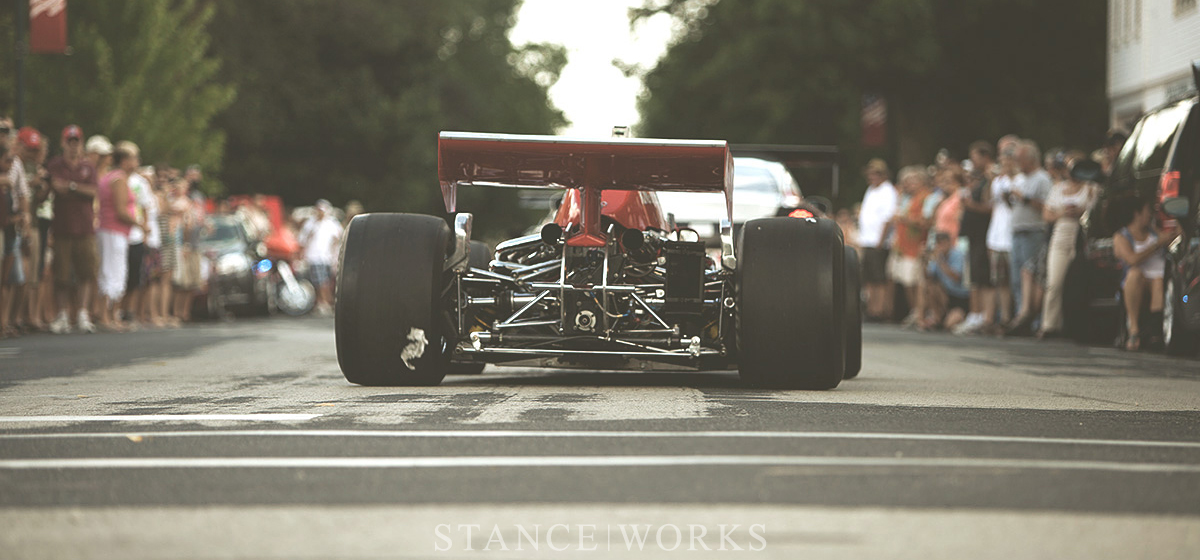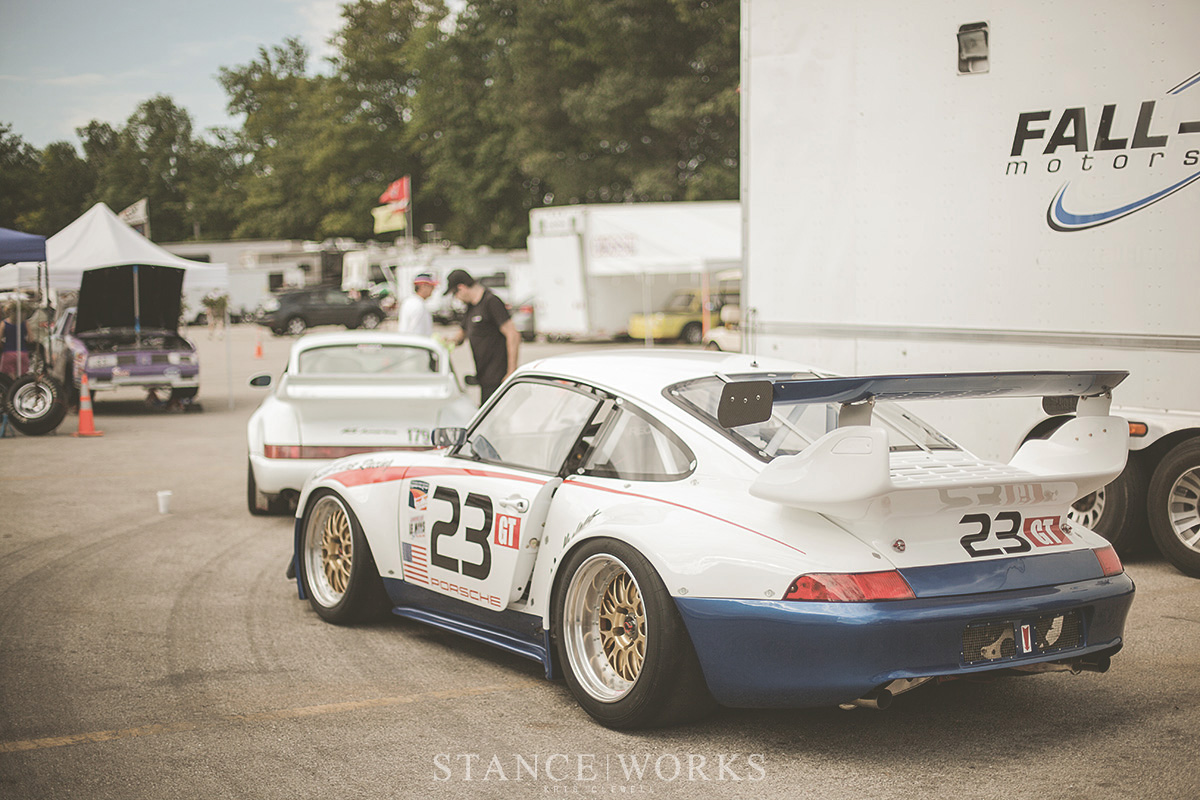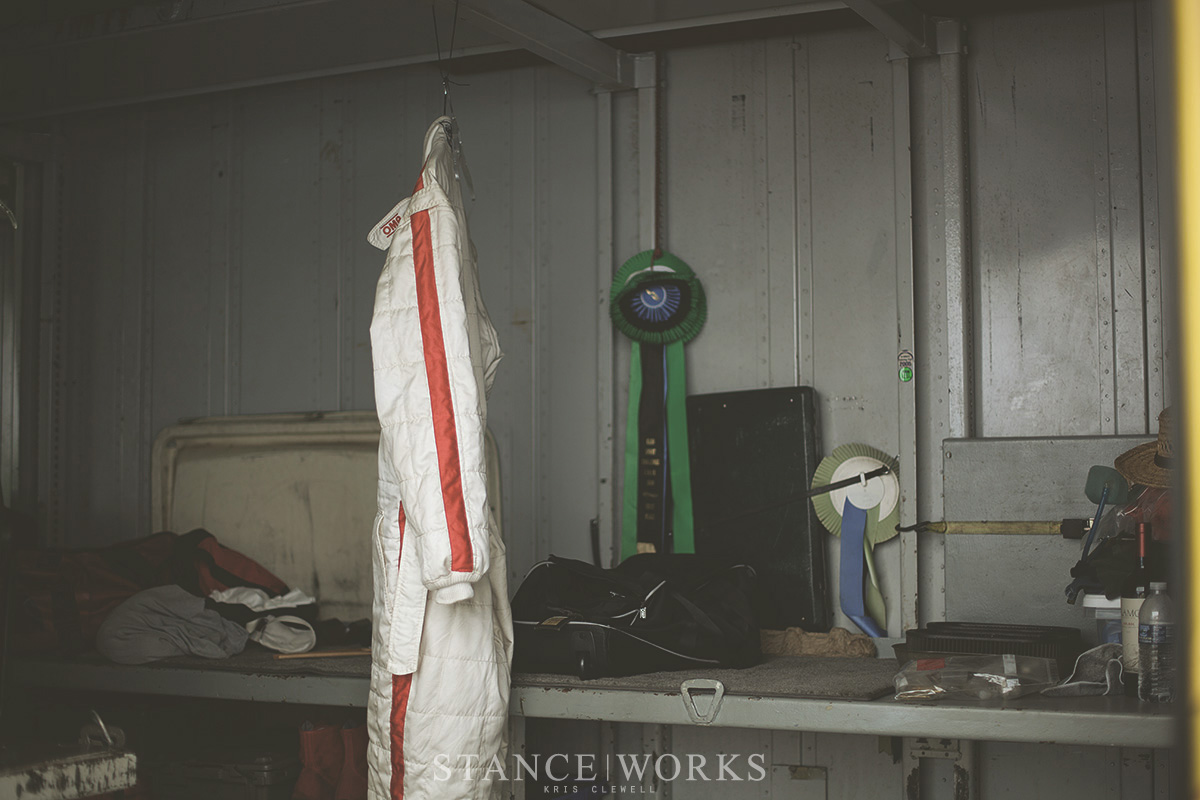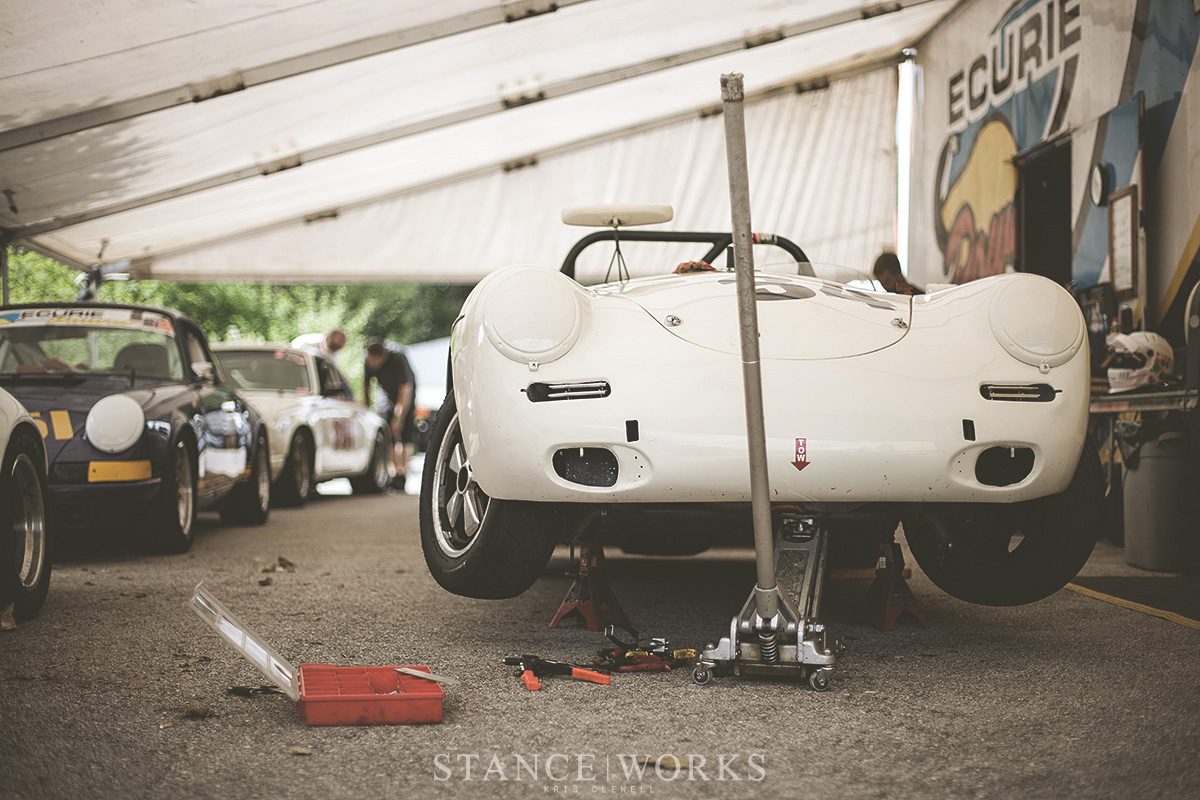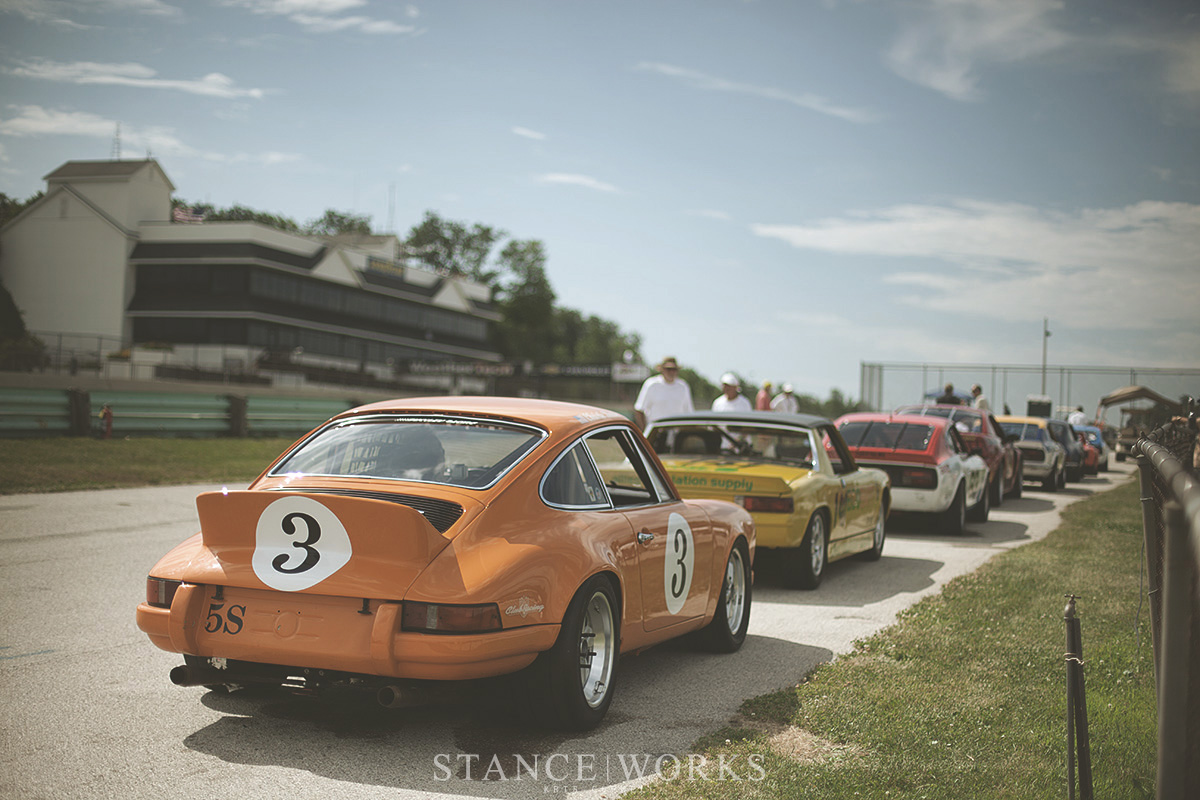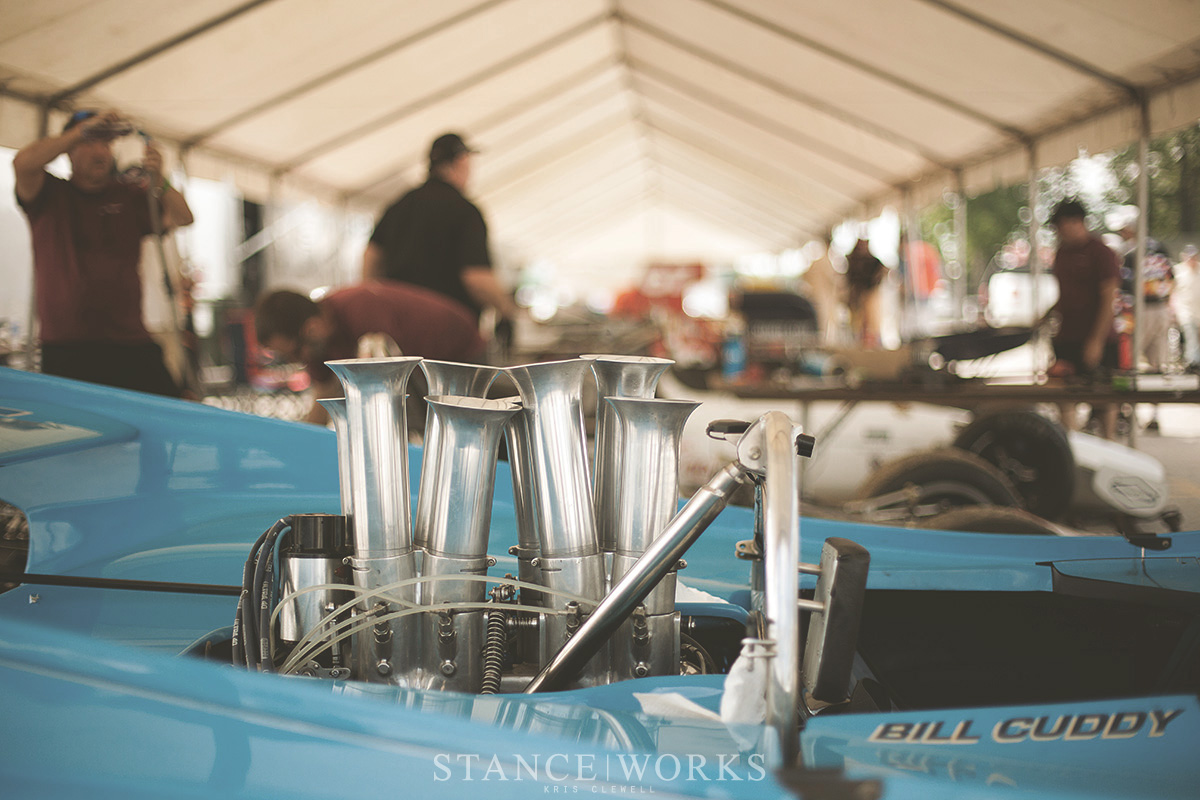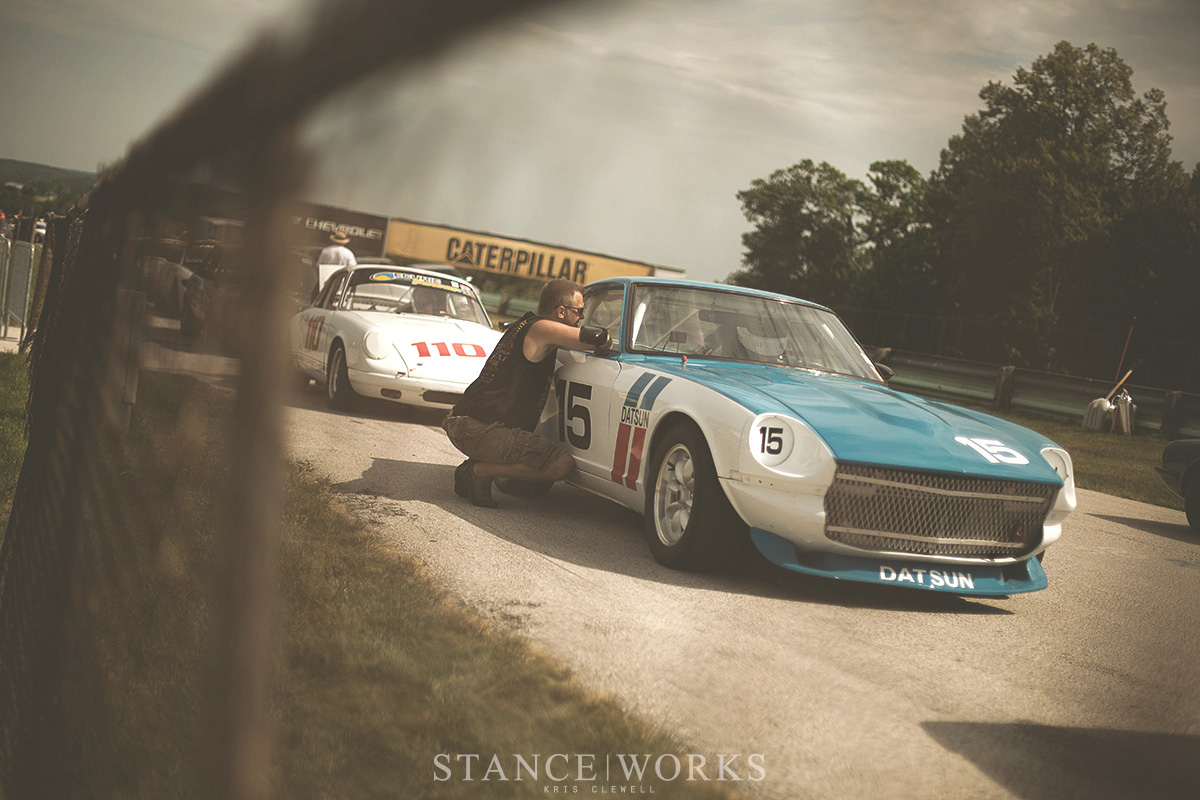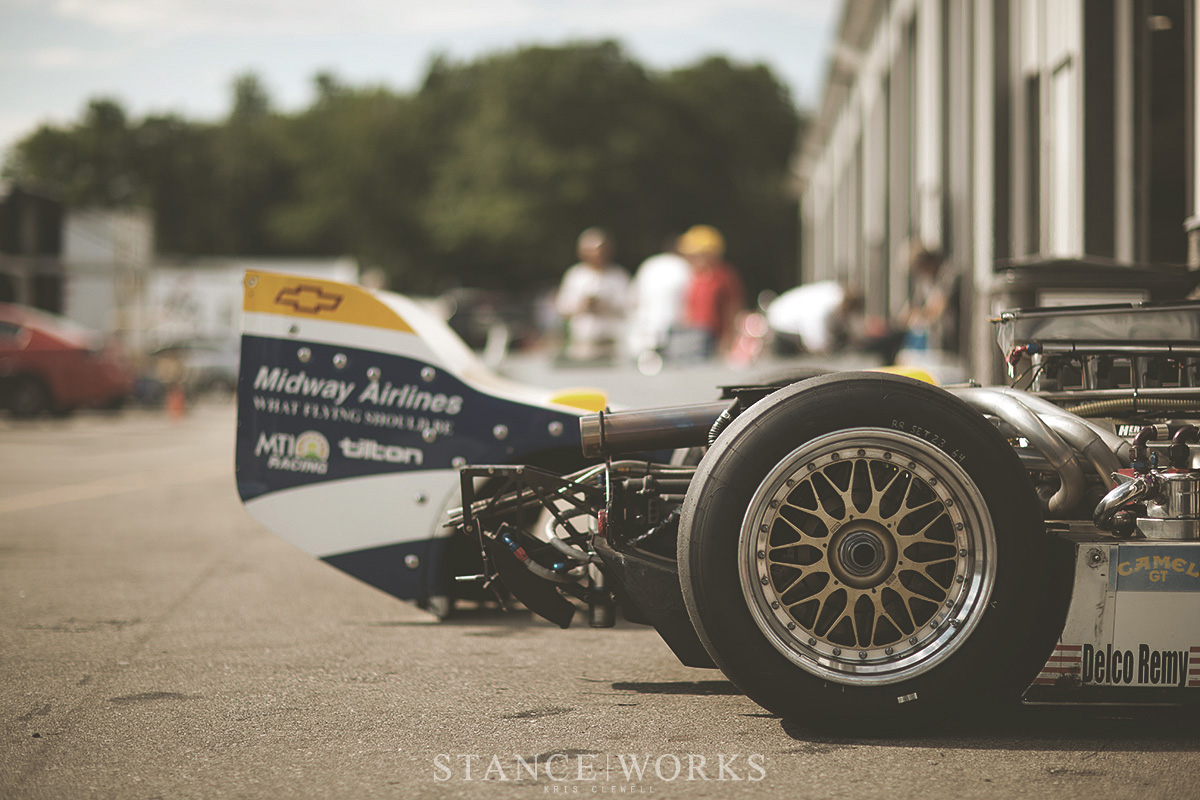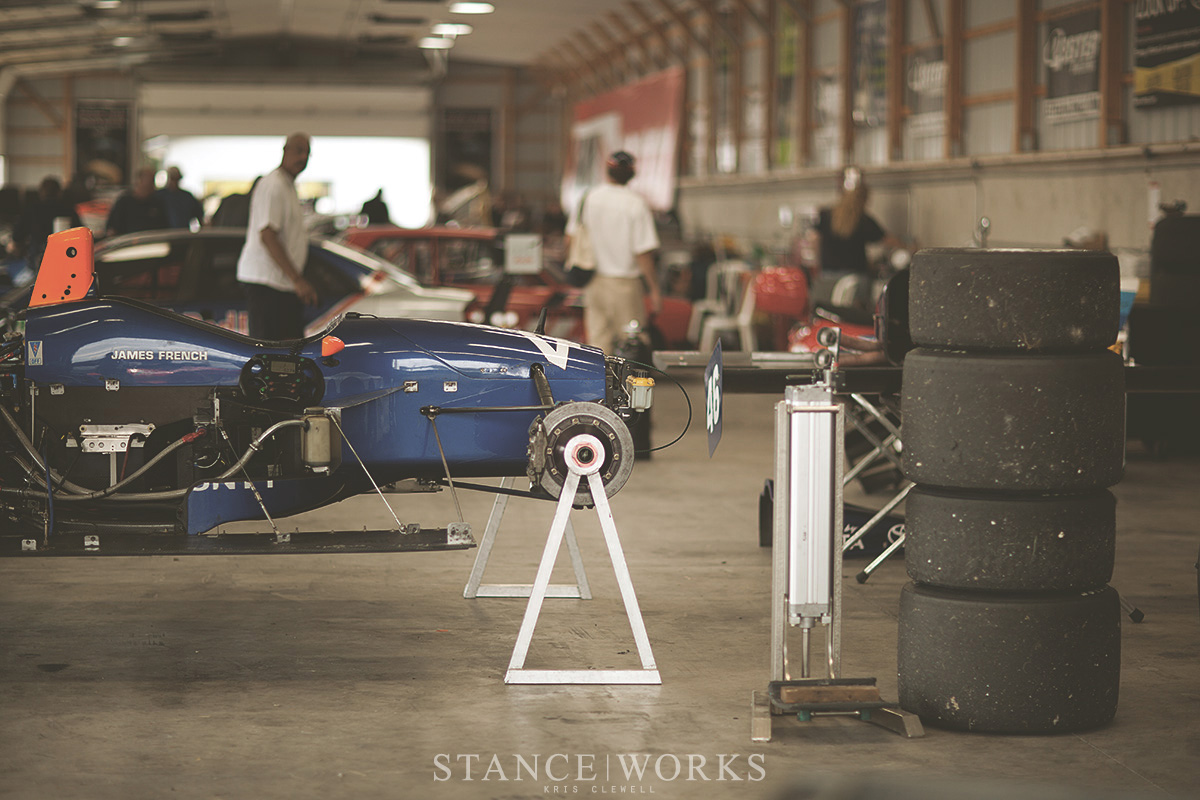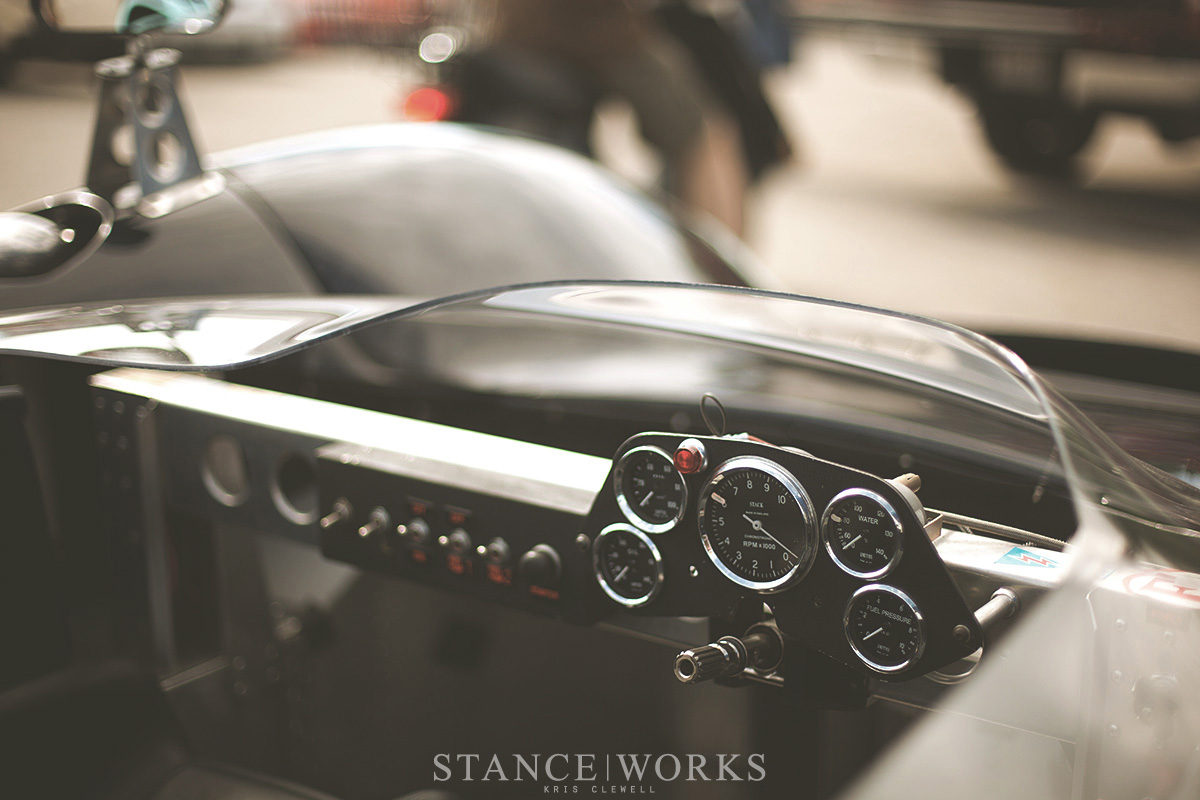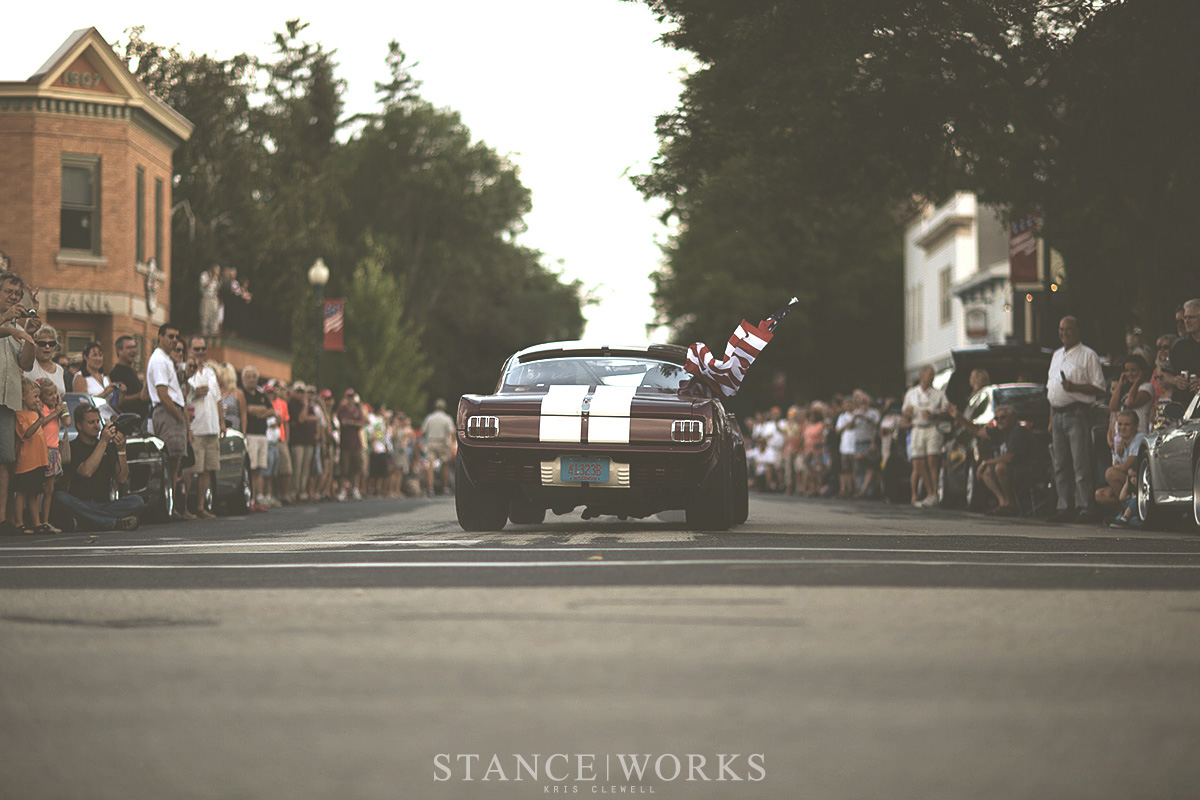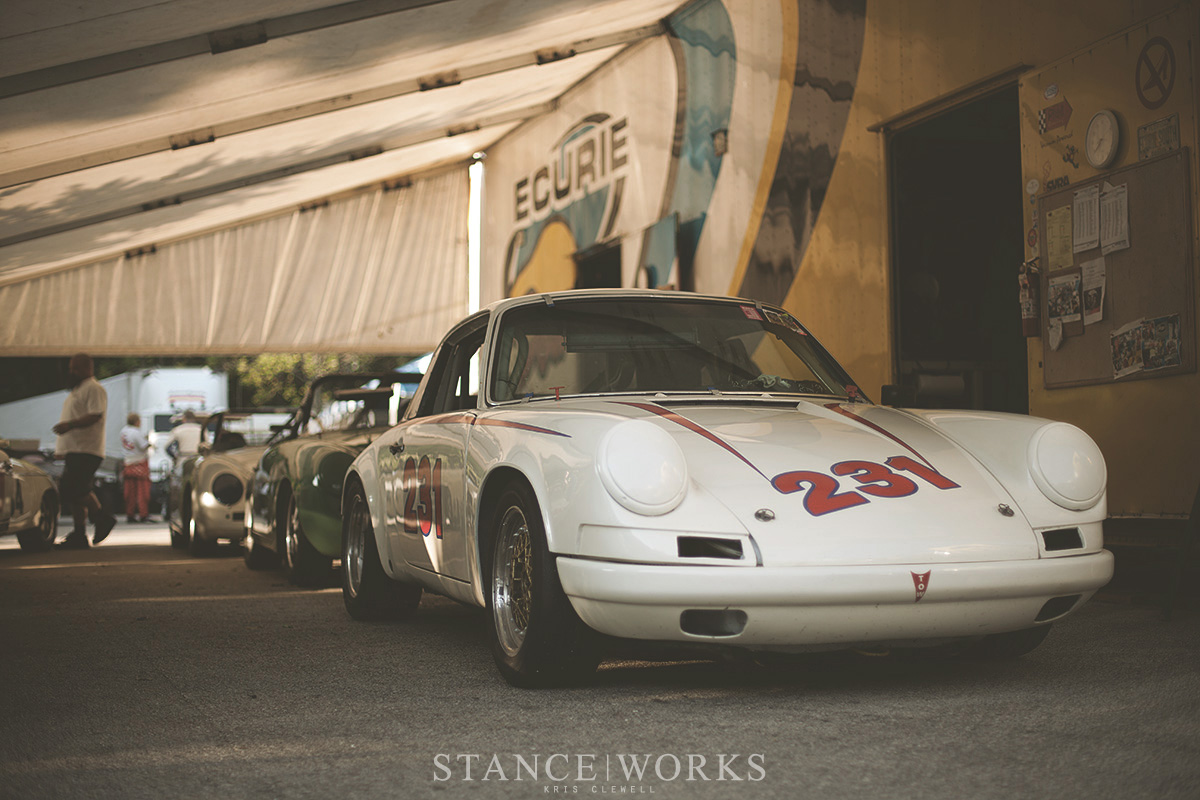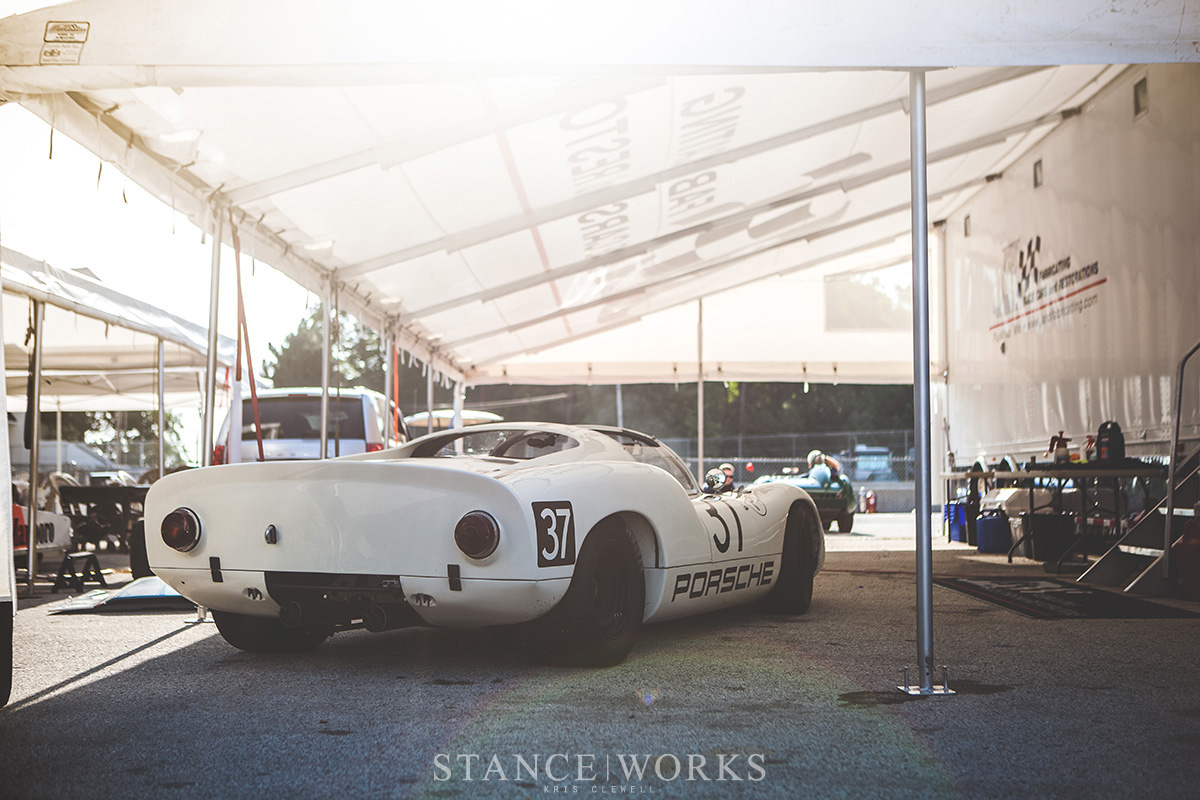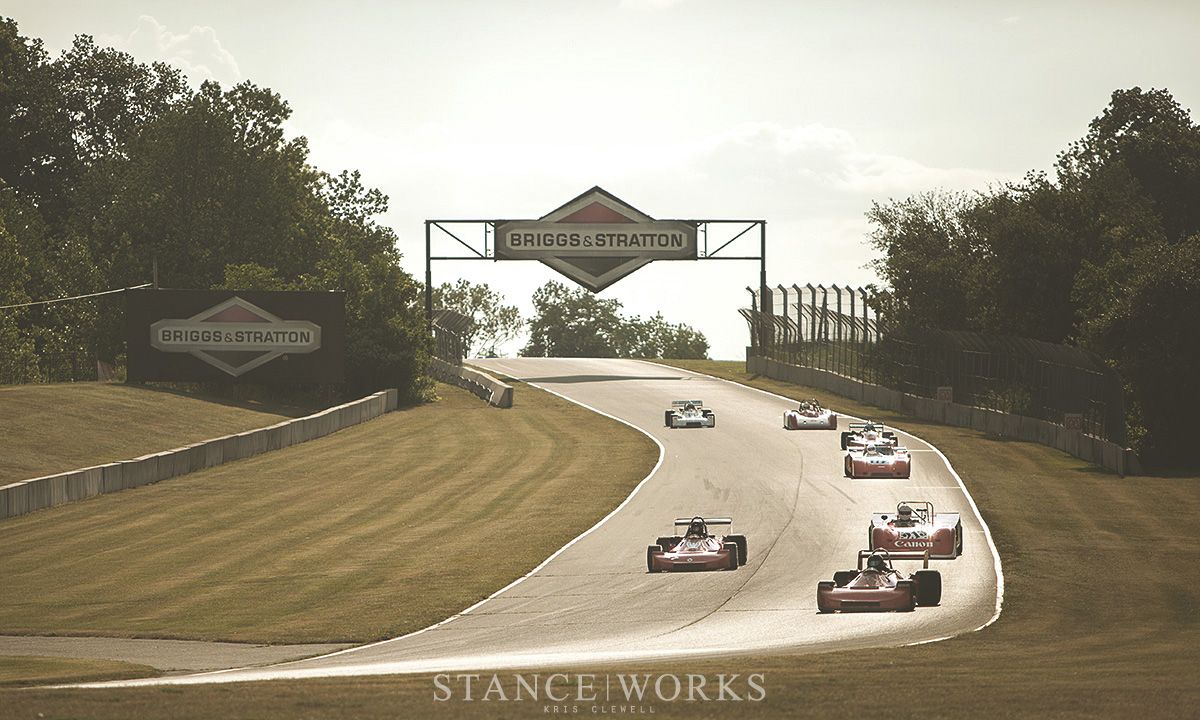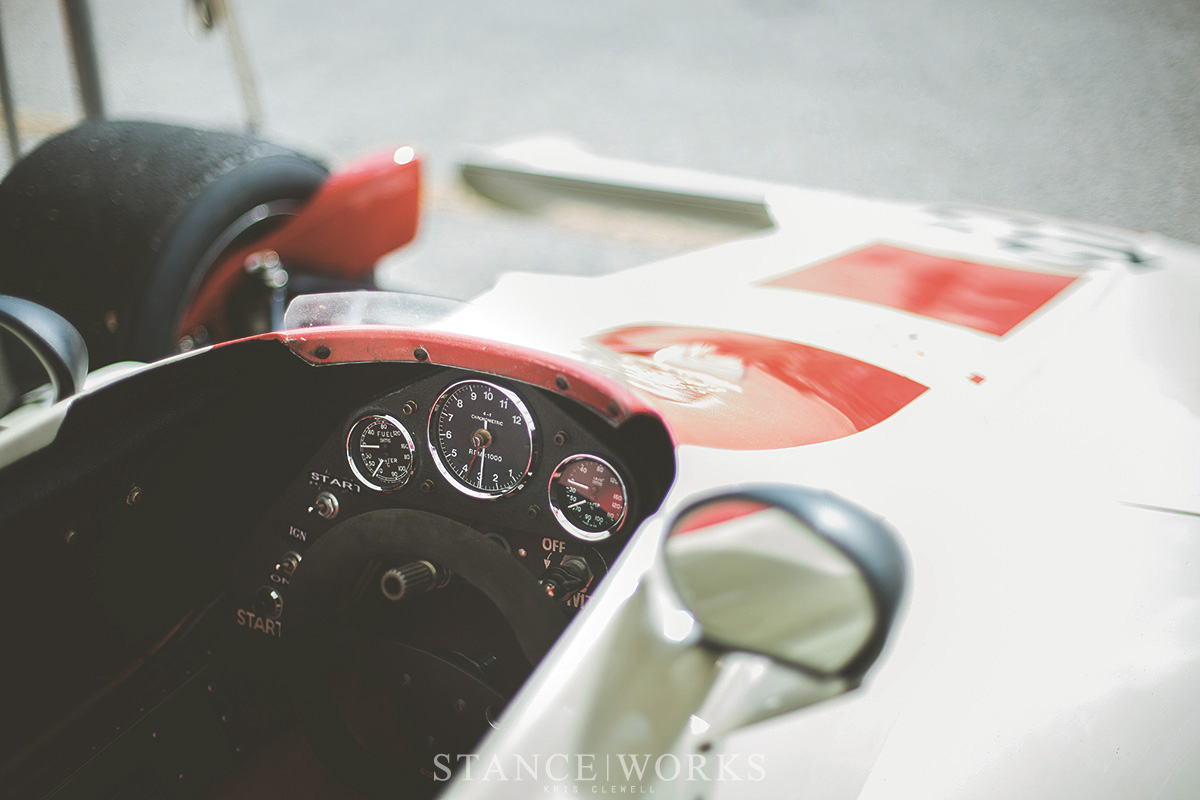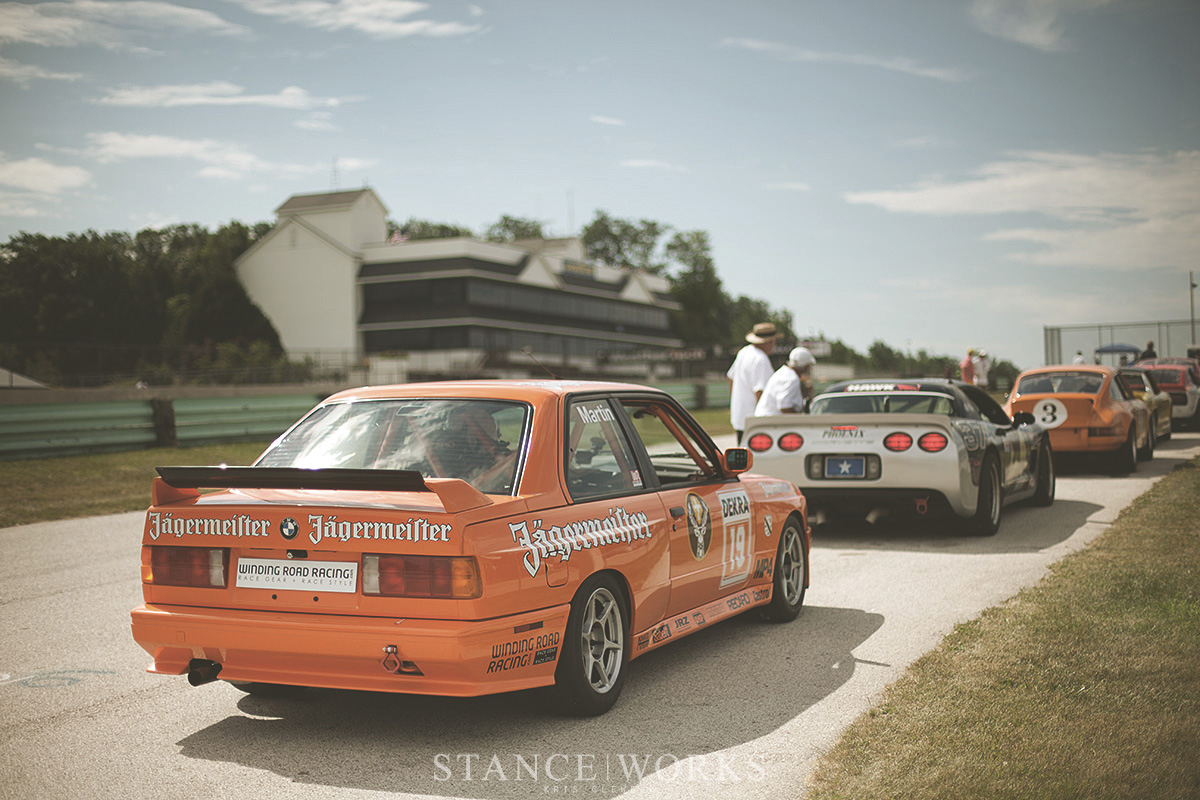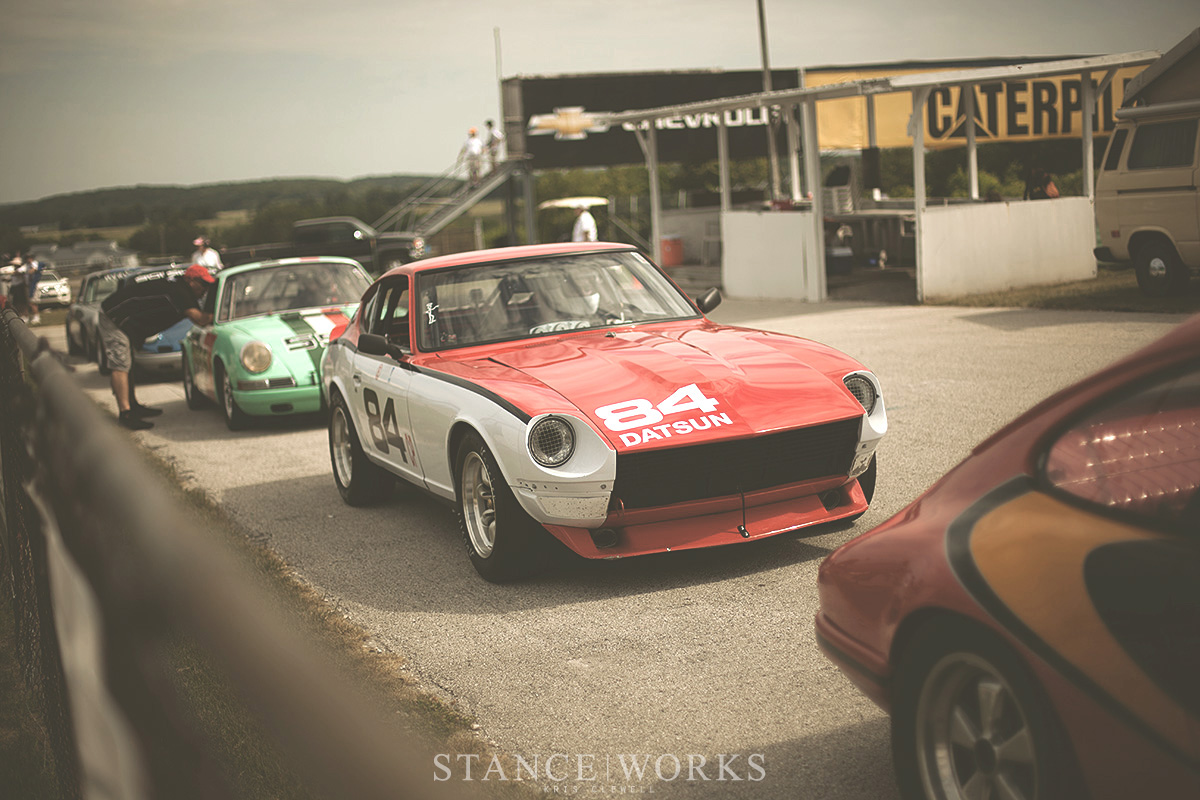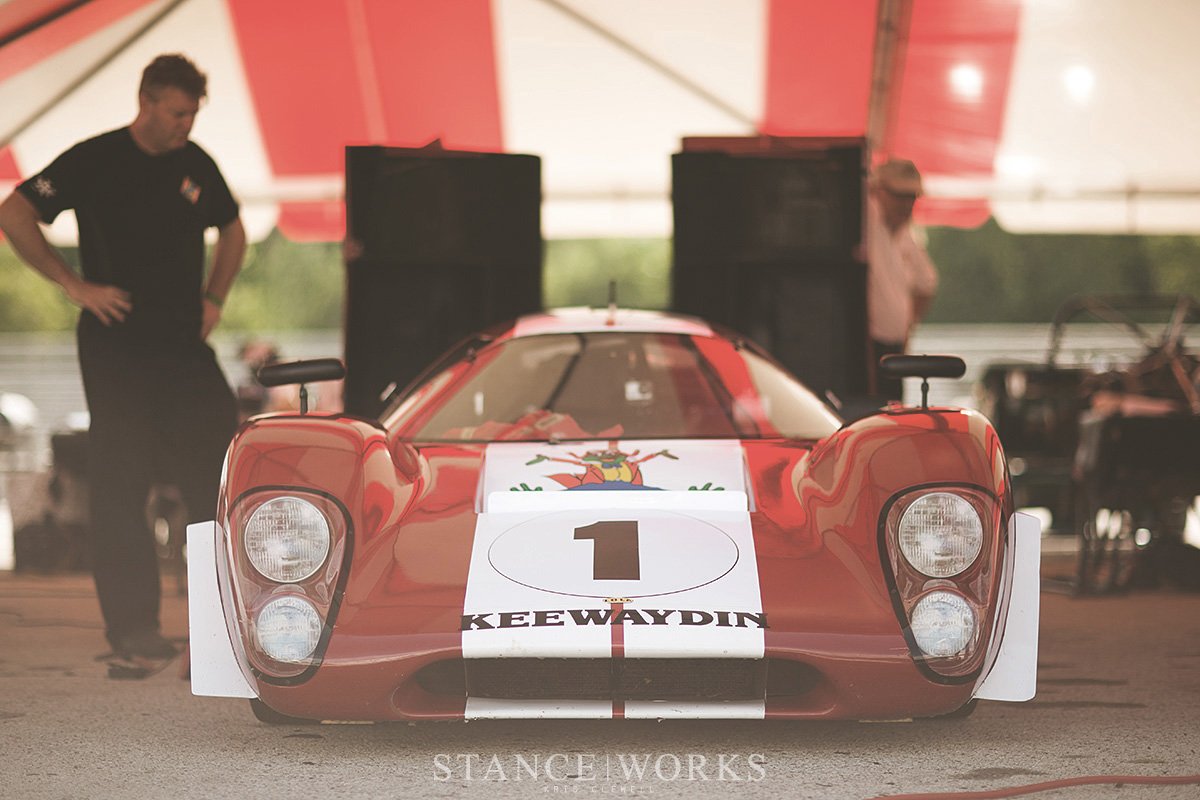I arrived just before civil twilight on Thursday. Surrounded by the carousel at the legendary Road America, I got straight to work to set up my small backpacking tent. It seemed lonely and sad compared to the rest of the living arrangements around the camping area; car guys cars were scattered about next to giant tents, grills, and fire pits. With the sun rusting away into the coming night, I pulled my bike out of my truck and started towards the hill that overlooks turn 7, just north of Hurry Downs. As I explored further into the track grounds, I was fairly certain I was the only one around at times. No cars. No people. Just myself, the rising night, and the track itself. The only problem was the heat: holding at a baby-powder-approved 83 degrees at the coolest, it was a rough night for tent camping. I wanted to get up for sunrise so I set the alarm for 5:00am, long before the 7:00am official gate time. The following morning I biked to the Sargento Bridge to watch the Sun take over. The first test runs don’t start until 8am, so I had plenty of time to go get my press credentials, and see more of the sleeping track. I had no idea how close I would end up getting later, and how loud things actually got during vintage racing.
Brian Redman is as much of a legend as some of the cars now featured in his races. Though known primarily for his work in the Porsche 917s, 908s, and for Ferrari, he also had a few early stints in Formula One. In 1977 he crashed a Lola CanAm at St Jovite and suffered a broken neck, sternum, ribs, shoulder, and bruising on his brain. Without fear, he went on in the future to win at Sebring and Daytona. It’s been said that in a Porsche 917 at Spa, he came to a blind corner and lifted just early enough to skirt around another car’s twisted wreckage. Later on, he said he hadn’t seen the yellow flag, but had seen danger in the emotion and reaction of the crowd.
The HAWK at Road America, with Brian Redman, has been around for many years. It is an event that is as much for the cars as it is about the curation of a culture that has been, until more recently, a niche for racing enthusiasts. For a few years, the vintage racing culture was in decline. You can blame the economy, or perhaps a uninterested youth, but there is no doubt that there has been a resurgence in the sport. Fueled by apathy towards boring, quiet, uninspiring race cars run by computers, paddle shifters, and driven by trust fund prodigies, spectators flock to Road America at the height of every summer in the third weekend of July. Cars from all walks of vintage are welcome. WIth eleven different groups subdivided into around seventy five sub-classes the breadth of cars has something for everyone.
Once I had my press parking pass and credentials, I made my way to the paddock. Early in the morning, most of the cars were still covered. A windy night left some showing leg from under their covers. The mornings activity slowly increased, and by a quarter to eight o’clock, the first group of cars was idling to the false grid. Porsche 356s, BMW 2002s, Alfa GTVs, a lotus 7, an Elan, some TR3s, old Datsuns, and old Healeys; they buzzed by with confidence through their practice session. As the afternoon went on, the sound got bigger, with Can AM and vintage Forumula 5000, and F1 taking the track. I could write an entire article just about the different cars that attended. Thursday, Friday, and Saturday were similar. Testing followed by practice, followed by qualifying. Sunday was the most competitive day, where drivers really went after the track, putting the performance to the tarmac thanks to modern tire compounds better than they ever were decades ago.
The culture at Road America encompasses more than just the track. In the early ’50s, the races were held around and through Elkhart lake. Like many events of the day, the races at that time were fairly unregulated, dangerous, and exciting, but after a child was killed in 1952 at Watkins Glen, racing on open public American roads was, for the most part, over. The nostalgia of having the race go through town is kept alive by the race car parade which runs from the track through downtown Elkhart lake where the cars park on the main strip. Throngs of people fill the town and line the street. Bars on the strip spill over onto the sidewalk. Led by a pace car and directed by the police from the track to the concours, the quiet town is taken over by millions of dollars worth of vintage racing cars. The sound while not as visceral as being at the track itself is unique in that you are seeing the pinnacle of vintage motoring rumble through public roads.
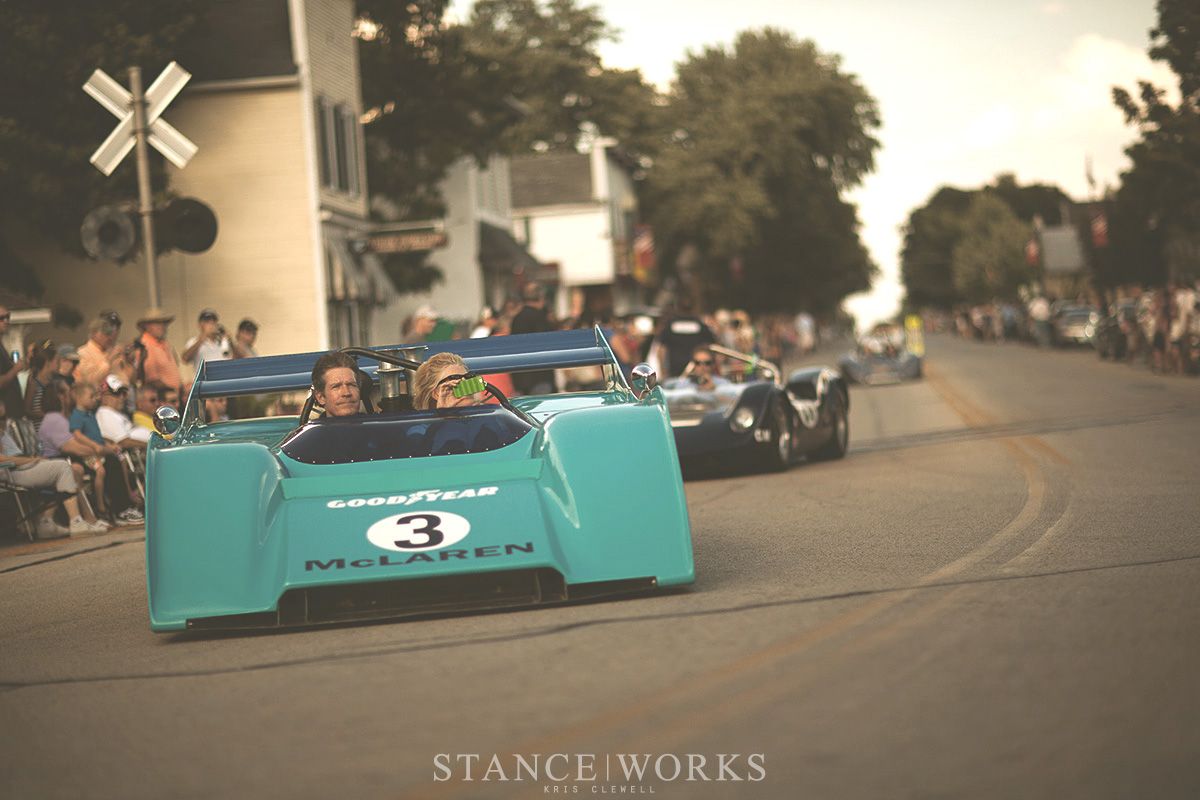
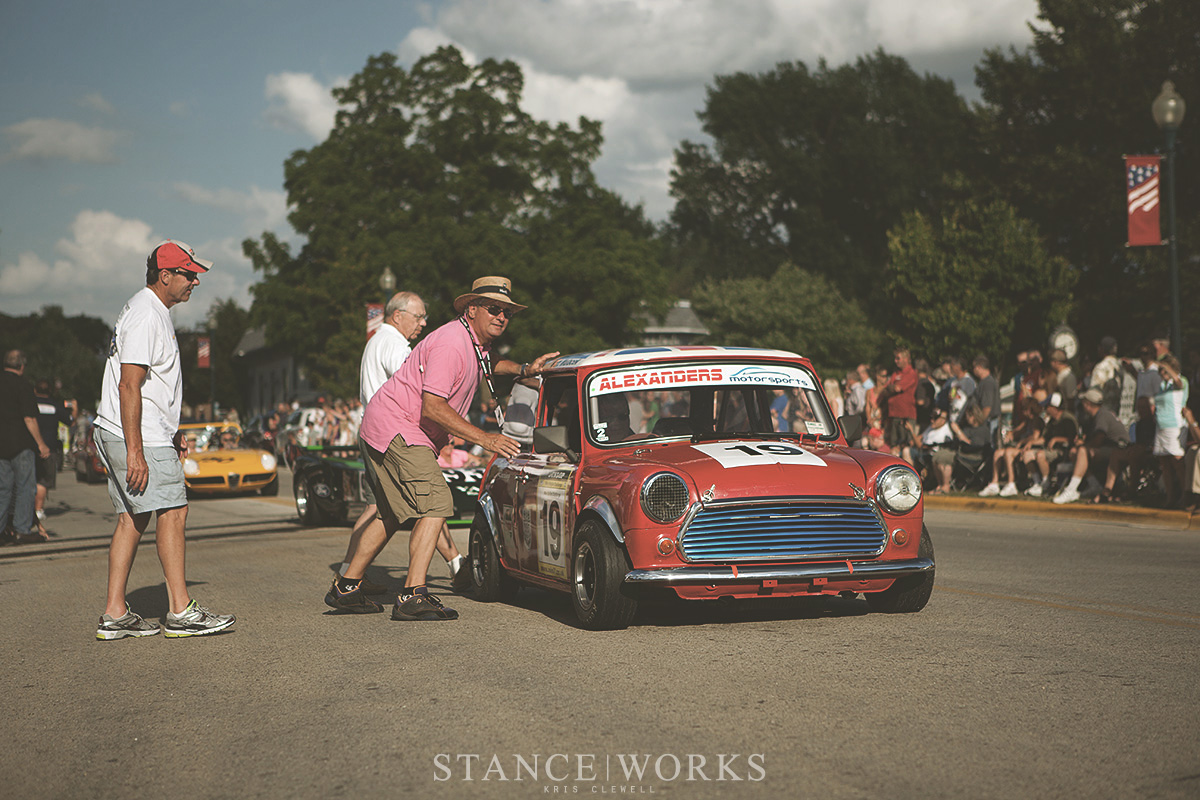
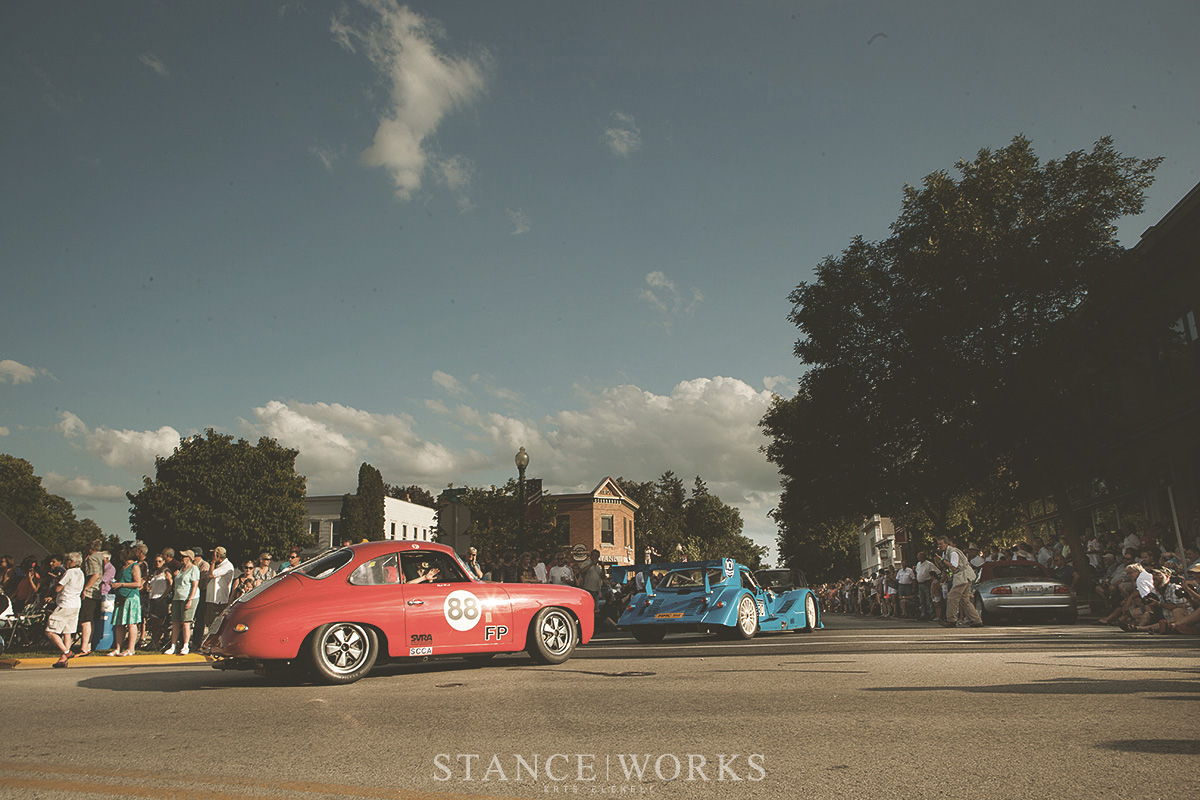
Crowds lean in and listen, whistle, and throw their arms in the air. Standing 10 feet from a 1000-hp big-block CanAm car, or the beyond-mad ’80s Formula 1 turbo cars as they idle, shoot fire, and rev by you, is a sensation that goes beyond hearing. Feeling some of the cars that once pushed the limits, hard enough to be banned, driving down what could be mainstreet in anywhere USA is inexplicably cool. As the cars park, the crowd filters through the street to stand inches away from legends like the Porsche 917, 908, and 906 – the Ferrari 312 and 312pb, Lola T165, 911 RSR’s, and on and on and on… Saturday night is the street car concours. Brimming with rarity, the street fills again. Most are rare metal, fast metal, and you’ll-only-see-it-once-in-a-lifetime-time metal. The access, again, is unprecedented. Seeing that owners were giving little kids seat time in the race and street cars was great. I feel events like this, having the young ones exposed to the cars, and the sensations surrounding the event, is critical to continuing the heritage. Without the younger generation understanding the roots of motorsport, it will be lost. None of this matters if there is no one there to care when we are all gone and buried.
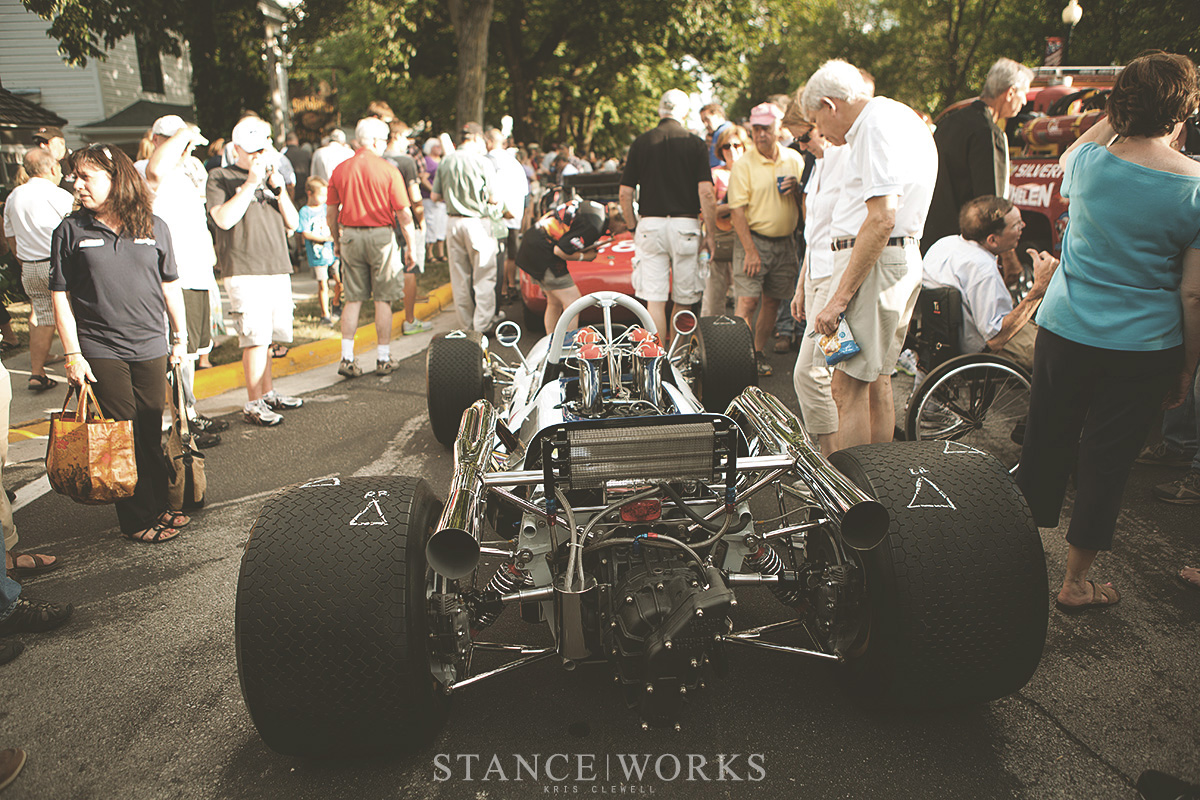
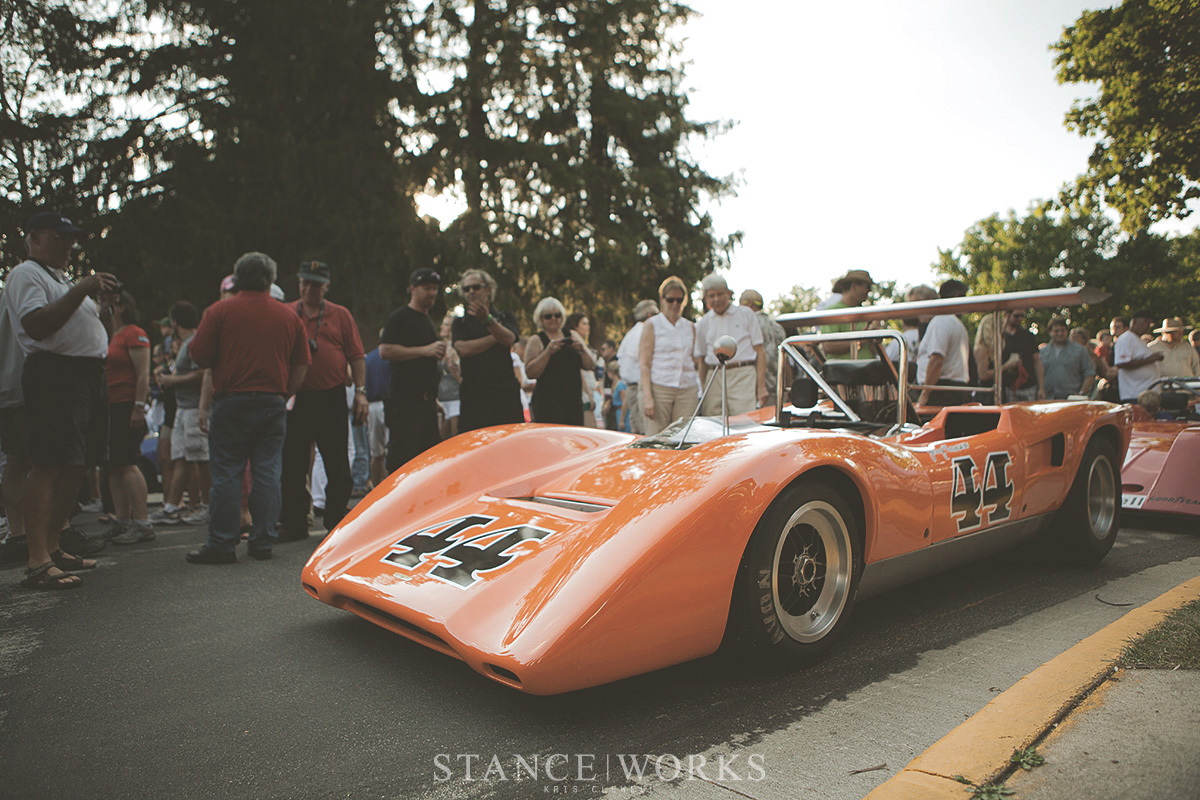

For the casual observer and attendee, most of the days from Thursday to Sunday feel similar. If you pay closer attention however, there’s a bit of a buzz around Sunday. While the Sunday afternoon event isn’t under the same pressure of having to answer middle-of-the-night phone calls from Maranello or Stuttgart as it was ages ago, there is a sense that winning still matters. Most of the big-money race teams have hired drivers, staff mechanics, and a support team at the track. Some of the other classes are one man who does the driving, wrenching, and support. I thought to myself: “I could even do this in a few years…maybe with an old 911…” On Sunday, these race teams can be seen changing engines, rebuilding gearboxes, or tuning carburetors. In true motorsports fashion, repairs are done in the paddock, with what is available and on hand. The average Joe can stand just meters away to watch as a gearbox from a Lola t70 is swapped, or as the engine cover is removed from the Rothmans Formula FW19 Formula 1.
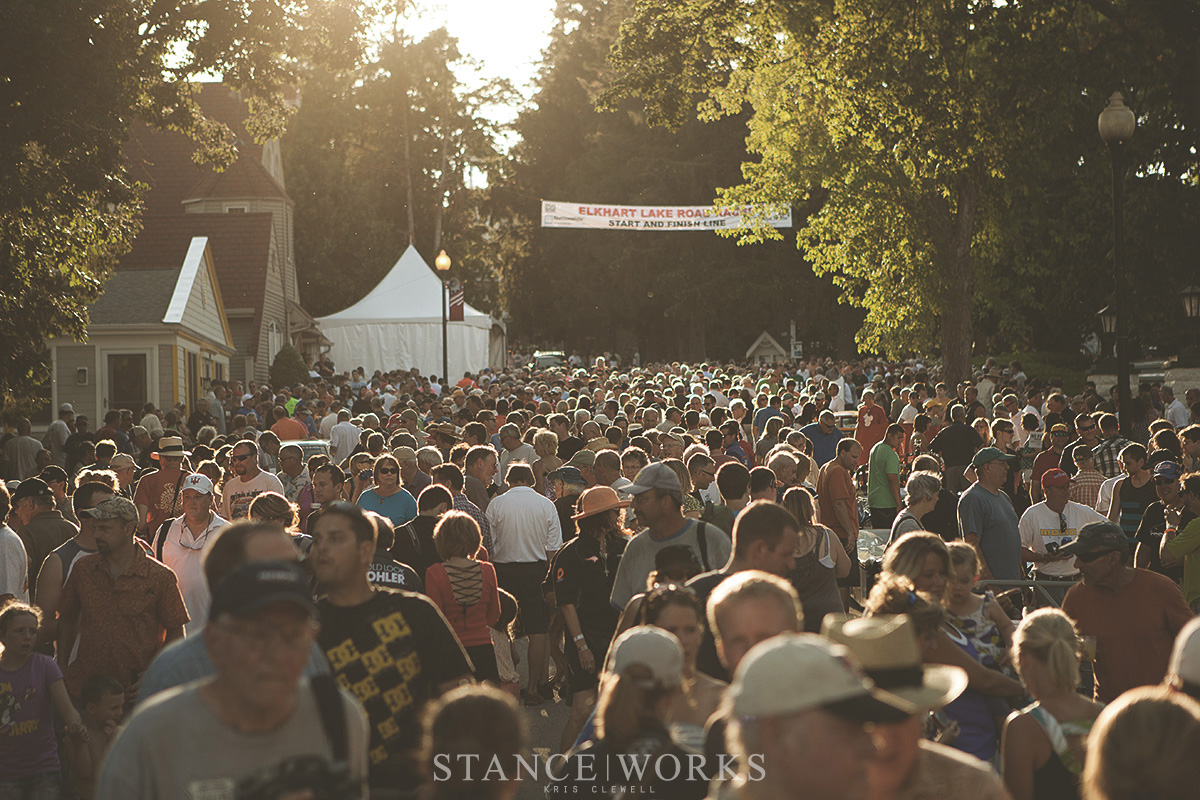
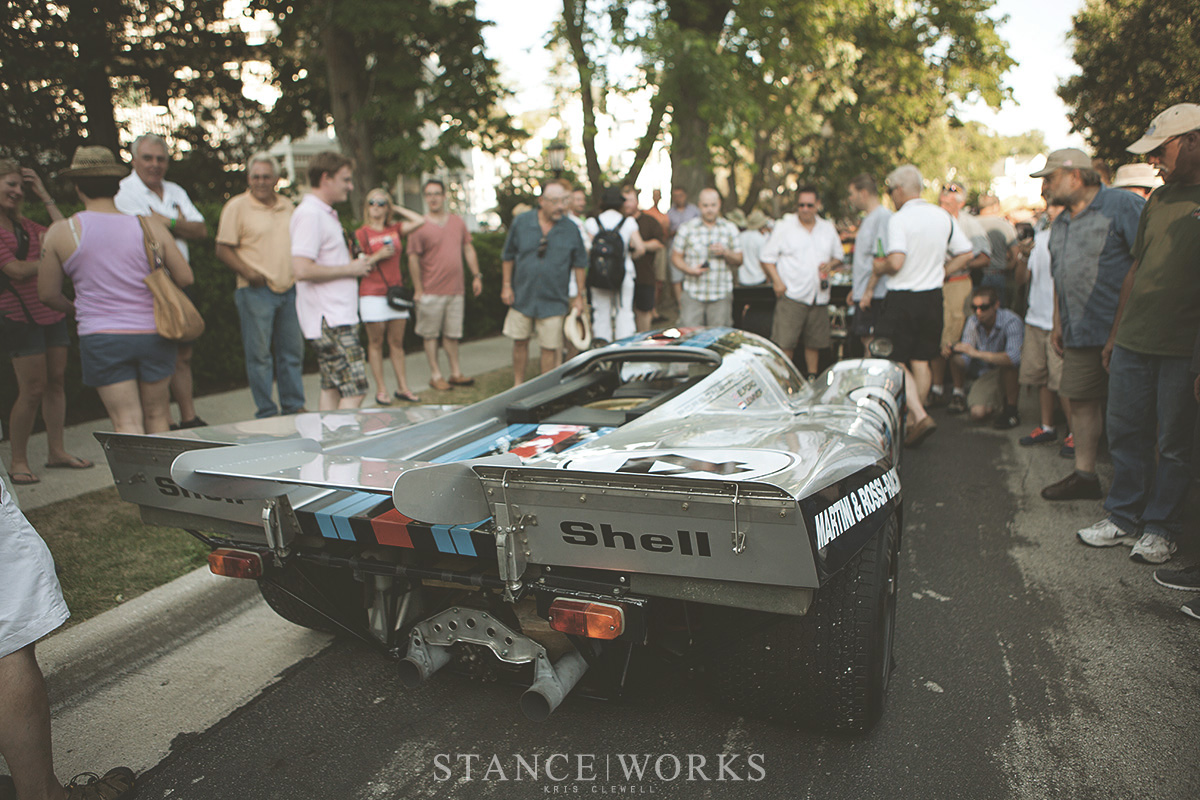
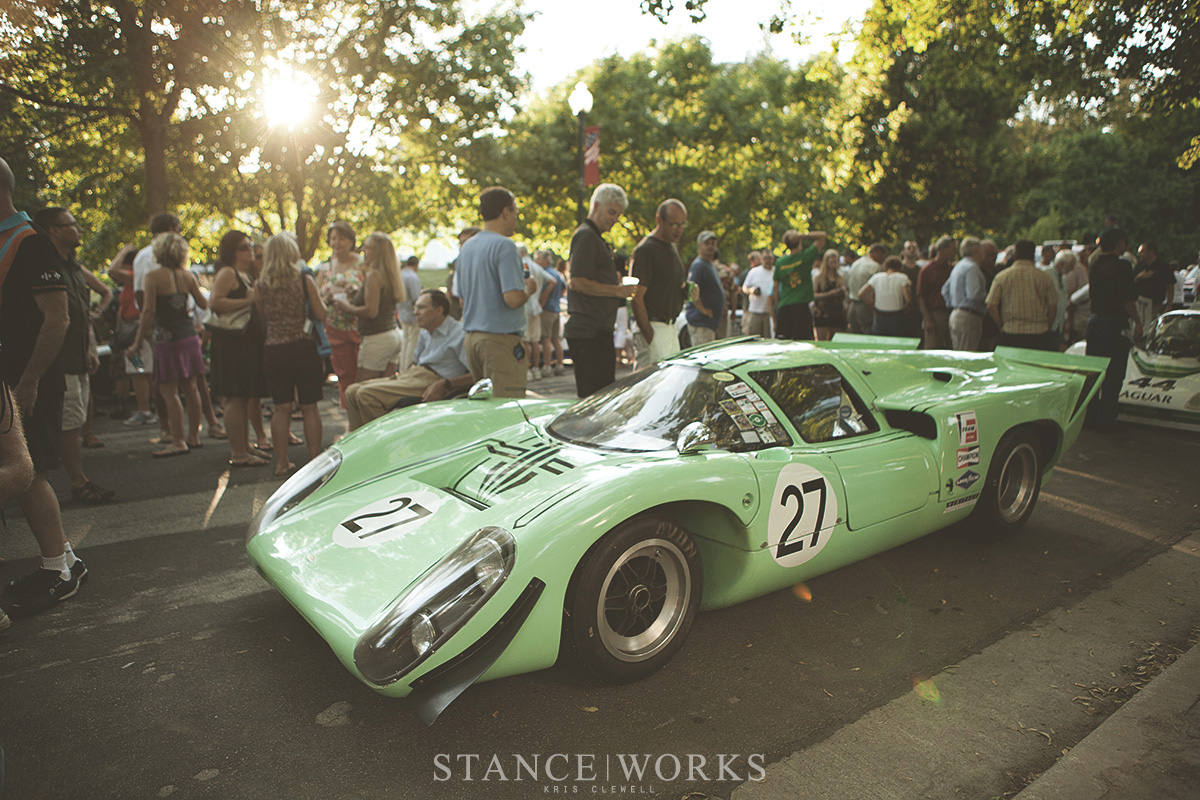
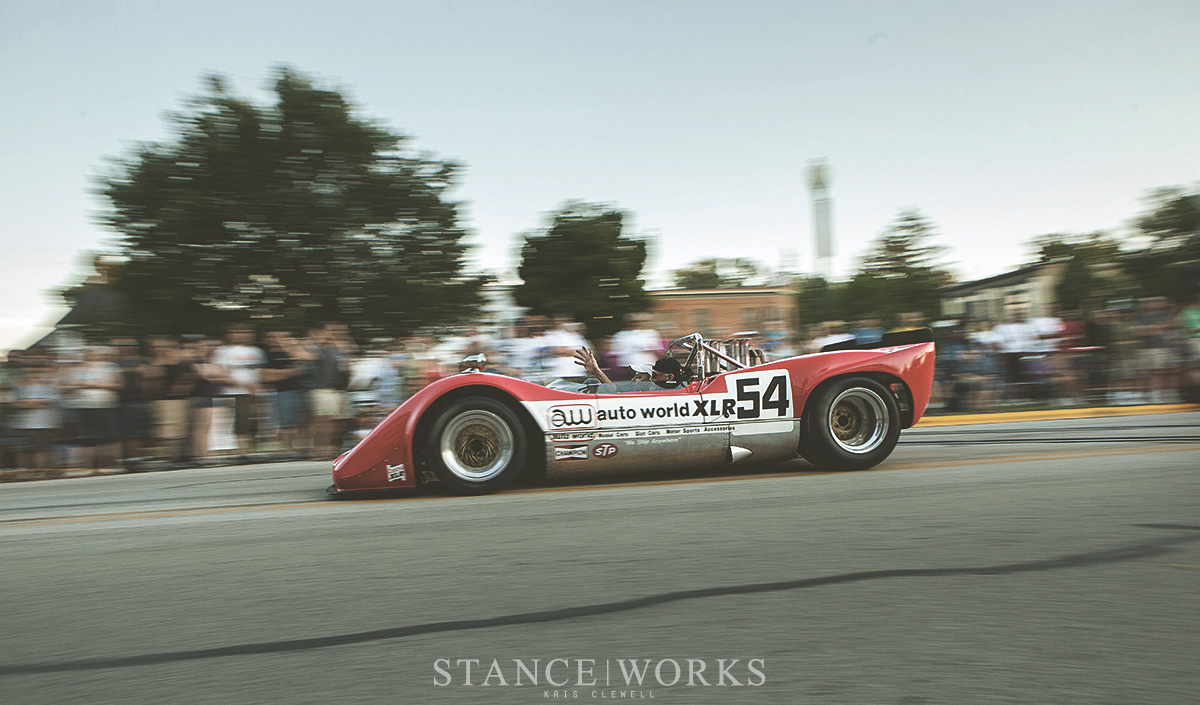
There are hundreds of teams around. The photos shown – you could be in a position to take. You can walk right up to these legends and stand in wonderment at the machines that have, over decades, created a nostalgia so strong that the cars are celebrated at every year at Road America. With a press pass I was able to stand on the front straight. Pants-wettingly loud, and physically moving, the cars went by all Sunday afternoon. I set my camera and notepad down, put my earplugs in, and just revelled as my senses were pummeled lap after lap. There are many great corners at Road America – Canada corner and Thunder Valley are great for the crowd, but I’ll never forget my senses being brutally assaulted on the front straight with rubber, sparks, induction noise, exhausts howling and the air wake of the cars screaming by.

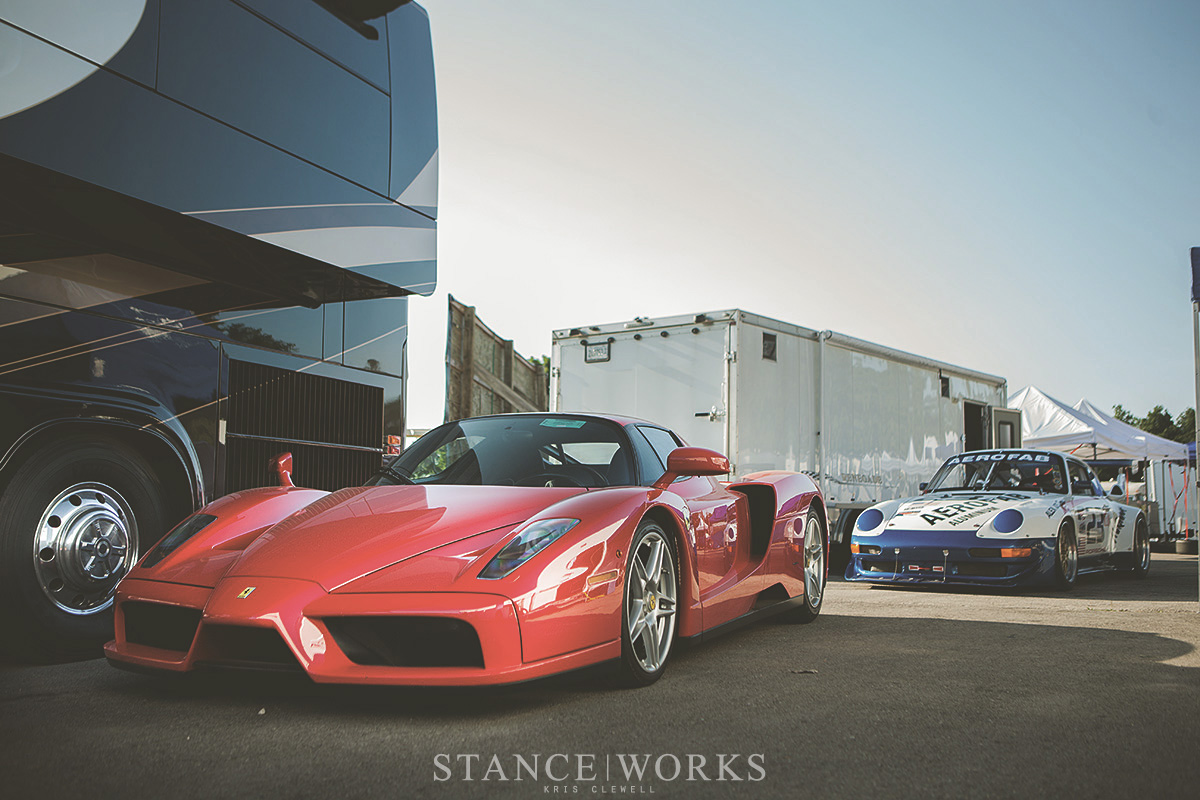
Sunday afternoon I followed my grandfather home. When I was young I hated his roundabout way to get places. He never drove on the main roads, and it took forever to get anywhere. I just wanted to get home to do other things. In stark contrast to the past, and despite driving what must have been a sleep study for a rental car, I now wanted nothing more than to drive and be in that moment. As the time ticked by, I wanted to get my hands on my Momo Prototipo awaiting me at home. I wanted to get to my garage to finish my own projects. In fact, writing this article has made me absolutely rabid to get my own project done. I wanted to do whatever I could to keep the high from Road America going. Spending the weekend with the greats left me to realize how bleak things looked for future generations. I’m going to editorialize a bit here, but I think they are doomed to grow up driving vessels filled with boredom seeded by manufacturers in the 1990’s. I fear that all of this will be lost someday,or that it will only be for the elite.
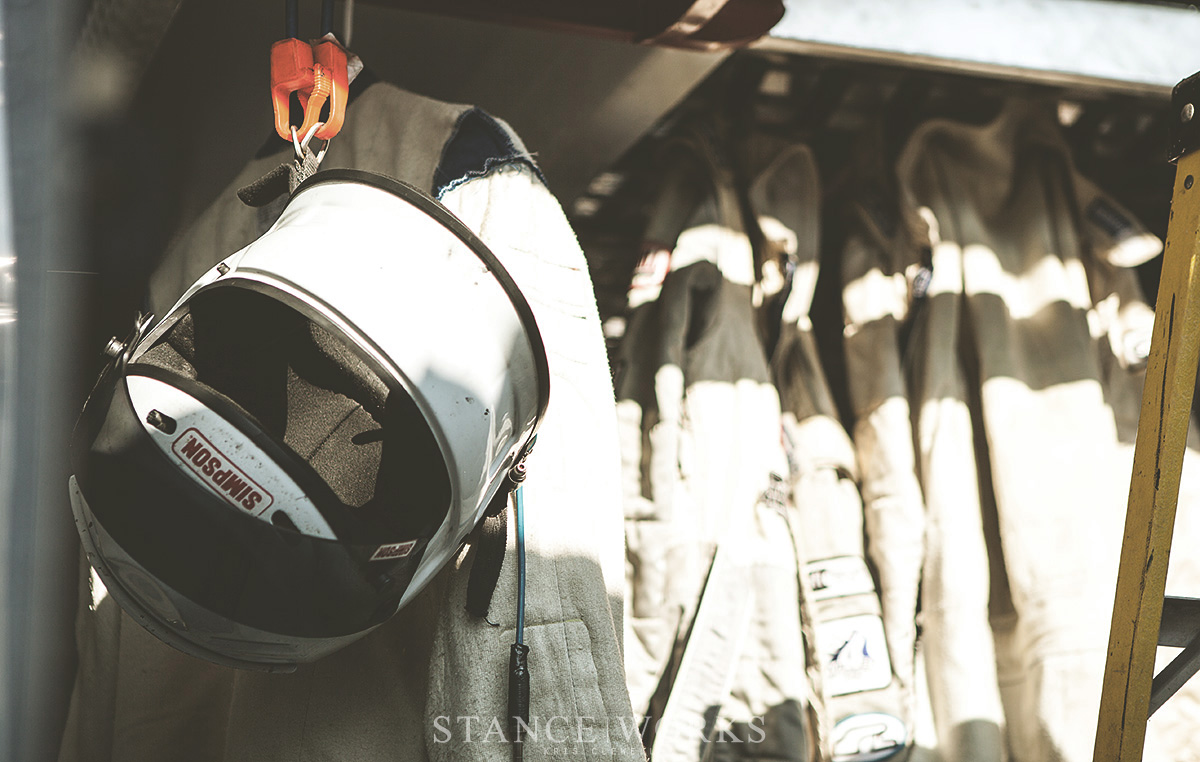
In 2030, will someone be gripping the chain link fence at a vintage race, with goosebumps standing up on their neck, wide eyed and lost in nostalgia for a 2013 Toyota hybrid or electric race car as it whooshes silently by? The senses and emotions of a human being need to be handled roughly at times. We need to hear something, feel something, or see something in order for our memories to be impacted. How can a human be moved to a point of passion without it? How does this new generation of race cars stack up against the past? Will there be nostalgia for those participating in our current race generation? I don’t have the answers to the questions, but I do know that right now, there’s a place to go to fuel or discover your passion for the greatest eras in motorsports. I’ll see you in Elkhart Lake WI in 2014….

